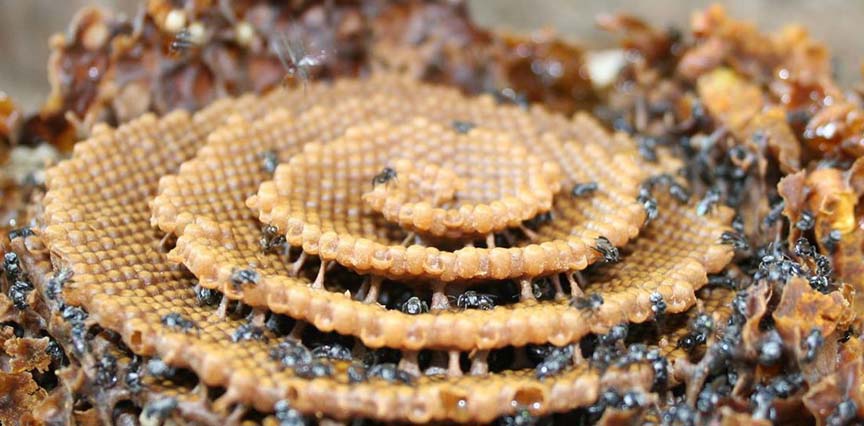
|
|
|
What's IotD? The interesting, amazing, or mind-boggling images of our days. |
|
IotD Stuff |
|
Permalink Latest Image |
|
|
|
Some folks who have noticed IotD
Neatorama |
|
Common image haunts
Astro Pic of the Day |
|
Advertising |
June 26th, 2018: Sugarbag Bees
In Australia one of natures few creations that won’t kill you is the Sugarbag Bees, Tetragonula carbonaria.
They are tiny, much smaller than the European honeybees we’re familiar with, and over time they have lost their stingers.
The other difference is the Sugarbag Bees build spiral combs.

| According to Tim Heard, an Australian entomologist and the author of The Australian Native Bee Book, the visible spiral is just the topmost layer of the complex, multistoried structure the bees build. A fully developed nest can contain a 10 to 20 continuously spiraling layers. Each circle can contain hundreds of brood cells containing eggs. The eggs develop into larvae, then pupae, and finally adult bees. Once the adult bee leaves the cell, new brood cells are built off of it, which helps form the spiral structure. |

| This nest-building process, according to Heard, can go on indefinitely, as long as a queen can lay new eggs. For now we don’t know exactly why the nests take the spiraling form. “A possible adaptive advantage of this form is that it is efficient use of space and also facilitates the circulation of air between the layers,” Heard told Live Science. “But then one has to ask, why it is not more common?” |
blueboy56 Wednesday Jun 27 04:20 PM
Um, could just be chaos theory. Once upon a time the original bee happened to do it this way and it worked. Either that or it is due to being down under and they like to have a porch in front of their brood chamber.
Happy Monkey Thursday Jun 28 01:13 PM
| Um, could just be chaos theory. Once upon a time the original bee happened to do it this way and it worked. |
lumberjim Thursday Jun 28 07:24 PM
I wonder if the spiral goes the wrong way like the toilet water down under does.
xoxoxoBruce Thursday Jun 28 11:08 PM
Nope no coriolis effect, they build them both ways.
Griff Friday Jun 29 08:49 AM
Pretty cool.
Bad news of the day varroa mites were found at an Aussie port.
|
Your reply here?
The Cellar Image of the Day is just a section of a larger web community: a bunch of interesting folks talking about everything. Add your two cents to IotD by joining the Cellar. |